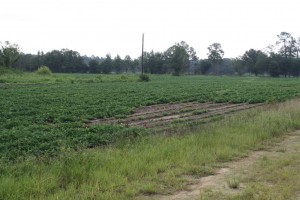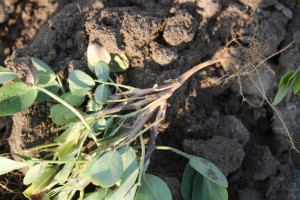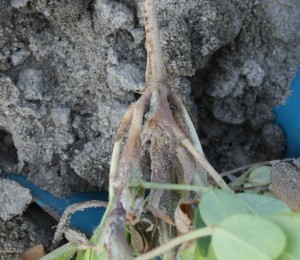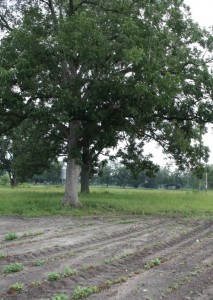Recently a farmer called me to come look at a field of Georgia 06-G peanuts that he had planted. There were several areas in this 40 acre field similar to the one pictured above. The peanuts in these areas were severely stunted compared to healthy plants. Upon closer examination of the stunted plants I was able to note the characteristics of zinc toxicity: stunting, purple coloration of stems and petioles, and shredding or cracking of the stems and roots. The distinct semi-circular to circular areas that were affected also tipped me off to the possibility of zinc toxicity. Peanuts are quite sensitive to excess zinc, especially at high soil levels and/or marginal pH of 6 or below. Zinc toxicity also is more common on sandy soils than heavier soils with higher clay content. Symptoms of zinc toxicity typically show up within 4 to 6 weeks of planting, but can show up as early as 2 weeks after planting in severe cases. An effective liming program may help to decrease zinc uptake by peanuts but will not reduce soil levels of zinc.
In this next photo you can observe the beginning of the splitting of the stem and tap-root at ground level of the plant.
There are several possible causes for zinc toxicity. In the case of this field, further discussions with the landowner revealed that this field once held several large pecan trees that were destroyed by a hurricane over 20 years ago. The trees had been fertilized with zinc for pecan production resulting in the toxicity symptoms observed in this field. As it turns out there was one pecan tree still in the field and the peanuts around this tree clearly demonstrated the effects of zinc toxicity.
- Wild Turkey Biology and Habitat Management - March 20, 2020
- Pond Weed Control – Common Salvinia - October 11, 2019
- Renovating Centipede Grass Infested Pastures - April 26, 2019




